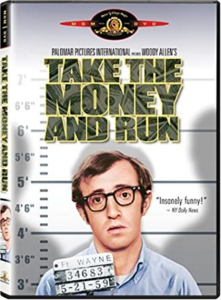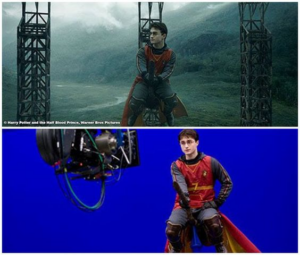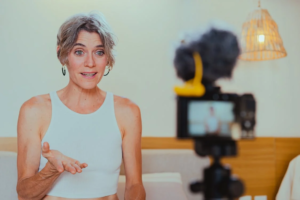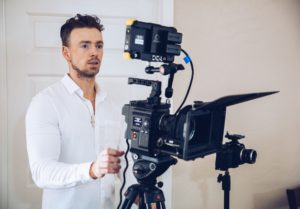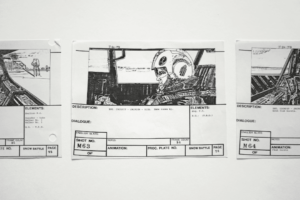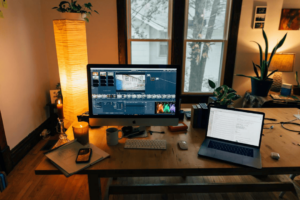A third-person point of view is where the narrator narrates the story about the characters, referring to them by names or third-person pronouns such as he, she, and they. This is the most popular perspective of storytelling among narrators and filmmakers. Notably, while using the third person’s point of view, the author distances himself from the reader. Likewise, in movies, the camera’s position and the distance between the camera and the subject express the perspective.
Filmmakers and storytellers widely use various types in the third person point of view. Master your narration skills and nail your storytelling art by learning the diverse use of the third-person point of view. Read on to know more!

What is a Point Of View Shot?
The angle from which something is observed or seen is called a point of view. It is an essential part of storytelling, whether a screenplay or a novel. However, unlike fiction, a movie can be shot from different points of view. It can be first person, second person, and third person point of view and is a vital tool to present the story in a zestful and unique way.

A point-of-view shot is shot from the angle of any particular character, showing the audience everything about the person in the picture. The movie’s sequential shots will be the character’s reactions to the events in the story. It showcases the character’s feelings and emotional state of mind to the audience, thus building the character. The most commonly used point of view shot is third person narrative, and it thus helps the filmmaker to:
- Connect the viewer with the character emotionally.
- Establish perspective.
Third Person Point of View in Movies
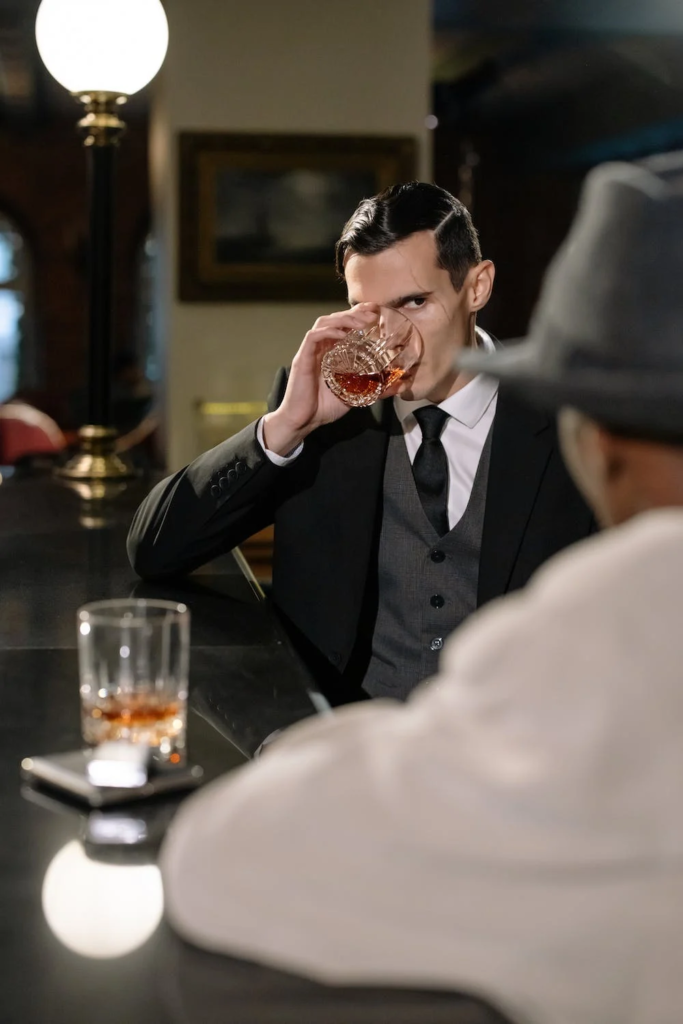
The third person’s point of view in movies refers to the perspective from which the action of a film is shown. It can be pretty tricky in movies, and it is helpful to understand how a shot is done. The point of view is through the camera and is known as “camera eye.” In simple words, it’s the perspective seen through the eyes of the camera operator. The filmmaker uses the third person point of view to show their perspective from where they stand.
“I guess I just miss my friend” – The Shawshank Redemption
The hound of baskervilles mind palace
nightmare | short film | thriller film | 3rd person point of view | pov|
Third Person Point of View Explained
A third-person point of view is usually used to put forward the perspective by using pronouns like he, she, they, or the character’s name by the screenwriter. A few simple examples in a sentence include:
- She played the piano well.
- He was a great player.
- They worked hard to reach their targets.
- The women who lived in the neighborhood were warm and friendly.
- The man with the mustache looked like a detective.
- The Pied Piper played his flute to lure the children.
The below video gives a clearer view:
In movie fiction, the third-person point of view is commonly called POV. In this style of narration or shooting, the narrator or cameraman shows the feelings and thoughts of one particular character.

When to use a third-person POV shot?
Third-person POV shots are the most commonly used angle by the director to showcase his perspective. The director uses this POV when he wants to connect the audience with the character’s emotions. However, these should only be used when demanded by the storyline.

Types of Third-Person Point of View
There are three types of third-person points of view used by narrators in storytelling and filmmaking.
- Third person omniscient
- Third person limited
- Third person objective
All About Writing in Third Person
Third Person Omniscient
Third Person Omniscient is the most reliable point of view, as the narrator has complete knowledge of the characters and the story. It’s also known as “God’s eye” or “God’s ear” view. Here, the narrator relates all the events and facts with the thoughts and feelings of the character, revealing their nature. This requires narration, voice-over, or graphics in movies or TV shows. A fine example is the TV show, Desperate Housewives, where Mary Alice Young dies at the show’s start and knows everything that happens. It is this character that shows, narrates, and recaps the information the way she sees it.
Introducing Mary Alice / Her Death
The 4 Ways to Write 3rd Person Omniscient
Third Person Limited
Third-person limited is the perspective where the camera shows the facts and interprets the events through a single character. The shots stick closely to one person and are often called a” close third.” This point of view allows the cameraman to limit the audience’s perspective and controls the facts and information the audience may want to know. Using this shot builds interest in the character and heightens the suspense.
MISS_BRILL a film by Simon Lewis
Third Person Objective
The third-person objective POV in the movie is often neutral and in an observational tone. This point of view makes sure the viewer eavesdrops on the scene.
Third Person Omniscient, Limited-Omniscient, and Objective
Advantages of Third Person Point of view
Third Person POV is filmmakers’ most commonly used way of storytelling. Indeed, they have their advantages:
- Strong character development
- Flexibility
- Authoritative and reliable
Strong Character Development
Giving the audience the third person point of view has a broader scope for the camera person and puts the spotlight on more than one character. Thus the camera perspective gives the viewer a 360-degree view of the plot, story, and characters and thus creates a rich and complex viewpoint.
Flexibility
Third-person POV helps the audience to see everything in the plot and the character’s story. The filmmaker or the cameraperson can switch between the various types of third-person POV, which dramatically helps the audience be inside the character and relate to their thoughts, feelings, and sensations, thus providing a more profound experience of the scene and setting.
Movies Told Through Multiple Perspectives
Authoritative and Reliable
When the audience sees through the camera in the third person POV, it gives them a bird’s-eye-view of the story or plot. It also helps the filmmaker or camera person to be more authoritative, reliable, and trustworthy to the viewer.
Kiss Kiss Bang Bang- Harry’s Point of View
Tips for Third Person Point Of View
Giving the audience the perspective of the story or character can be pretty much straightforward. However, the tips below can help get the most out of shooting in the third-person POV.
Determine the character that fits as the third person
Right from writing the screenplay, analyze and determine which character will best serve in all three types of third person POV i.e., omniscient, limited, and objective. However, each style has its advantages depending on the movie genre.
Choosing Characters
Choose which character will be your point of view in all the scenes. Here, it is pretty tricky as the character that loses the most in any particular scene will be the one who follows the plot and other characters closely. As their thoughts and reactions carry more tension, they will have more to learn and thus fit through the camera view.
Revelation is Essential
Point of view helps in the character building as the story that revolves around the movie is described through the character’s eye. Always reveal what the character knows and be aware of the character’s limitations. Review the scenes frequently for mistakes like unnecessary opinions or unwanted information about the character.
Consistency
Third-person POV helps use different methods, but consistency is vital. For example, the movie can be from the hero’s point of view, and switching in the middle to another character will be a total spoiler. All it will do is destroy the perspective and confuse the audience.
How to Shortlist Third-Person Point of View Shots?
Once the POV shot is decided, start preparing a shortlist. Include the details of the camera movements and placements of the shot. The shortlist also helps decide whether to use a handheld or static camera. Also, it helps to determine whether a scene needs to be at eye level or from a high angle. Thus, these details help combine the scene quickly and effectively. In addition, it helps to enhance your perspective and creative angle in any setting.
Conclusion
Third-person point-of-view shots are the most reliable and powerful camera technique to attract the audience into the plot. The different types of third-person POV – omniscient, objective, and limited help to build character, add suspense, and emotionally connect the audience with the character. Experiment with these shots in your next project, and share your experiences with us!
Videos
First person vs. Second person vs. Third person
Third Person Objective, Limited, and Omniscient
